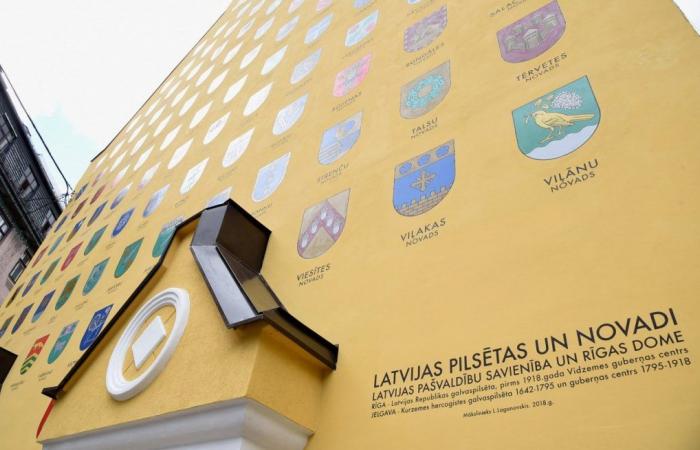
Review of county reform
The opportunity to instigate changes in the districts – next year
During the three years since the administrative territorial reform, several problems have emerged. First of all, the Constitutional Court instructed the legislator to resolve the ownership of Varakļani County, as its addition to Rēzekne County did not comply with the Constitution.
The State Administration and Local Government Commission of the Saeima will start work on the Law on Administrative Territories and Settlements on Wednesday. The Ministry of Environmental Protection and Regional Development, which oversees the work of local governments, is currently not directing other changes to the law, which was previously justified by industry minister Inga Bērziņa (“New Unity”) in an interview with Latvian Radio.
“Currently, the borders of the counties should not be redrawn. The verdict of the Constitutional Court should only be implemented. Quite a bit of time has passed since the elections, not even one full convocation period – four years. Therefore, the counties have not had enough time to work together, to form a joint administration, companies, institutions, even if get used to each other in an emotional sense. So this time is too short to redraw the borders of the counties,” she expressed.
At the same time, the regulations of the Cabinet of Ministers will provide for the possibility of instigating changes in the borders of the districts after next year’s regional governments.
“After 2025, by conducting population surveys, counties will be able to come up with proposals for separating or adding a territory to another county. We are ready to ease these rules,” Bērziņa assured.
Allows discussions about the non-merger of national cities and surrounding counties
After the county reform, the division of Garkalne parish has remained in a semicircle. The wealthy parish was quite unexpectedly included in the newly formed Ropaži district four years ago. It is possible that the center of Garkalne district could change again, because the law instructs Ropaži and Ādaži districts to decide on changing the borders of Garkalne. In the population survey, two thirds of the participants supported joining Ādaži. A working group in its city council evaluates possible future scenarios.
On the other hand, the separation of Babīte from Mārupe is demanded by the members of the currently united city council. Defenders of the interests of Ikšķile have also become active, pointing to the marginal effect in the large Ogre region. And in several local governments, the desire to revise the county borders is felt. Could this be reflected in the decisions of the parliament this spring?
Olegs Burovs, head of the State Administration and Local Government Commission of the Saeima
allows discussions about the motion of the Union of Greens and Farmers to remove from the law the addition of adjacent counties to national cities in 2029,
but he is skeptical about redrawing the borders of other districts.
“My personal opinion is that it takes time to fully evaluate everything. It should be understood that in the meantime municipalities are merging after taking loans, so in addition to those emotions and wishes, one should pragmatically look at what could happen [atsevišķu novadu] division. What loans were taken, how would the balance be distributed, whether capital companies have been merged, whether the municipal police or social services have been merged. How would it work in the case of the division of a county,” points out Burovs, on the aspects that should be taken into account.
The amendments to the law are expected to be adopted by mid-January
There are problems all over the place – a third of municipalities have budget difficulties, the availability of services is not improving, which is also a merit of the reform, according to one of its most active critics, opposition representative Māris Sprindžuks (“United List”). The representatives of this political force will encourage the inclusion in the law of the criteria for revising the boundaries of the districts, guided by the changes in the number of inhabitants, as well as assigning greater responsibility to the cities in the management of the regions adjacent to them.
“State cities should create cooperation territories with the surrounding county. State cities need a new function – to organize a dialogue between the state, ministries and municipalities. In this way, we would get this missing link, which does not work in Latvia, unlike Estonia and Lithuania.
No one is responsible for regional planning, policy,” says Springjuk.
Urgency has been requested for the amendments to the Law on Administrative Territories, so that they can be considered in two readings in the Saeima.
The State Administration and Local Government Commission of the Saeima will initially call, in the first reading, to support the addition of Varakļani to the Madona district from next year without additional changes. It is planned to give a few days for the submission of other proposals for changes to the law, and up to eight commission sessions for their discussion, so that the Saeima can adopt the amendments to the law shortly before Midsummer.
Tags: meetings planned review county reform law extensive map Article
-




